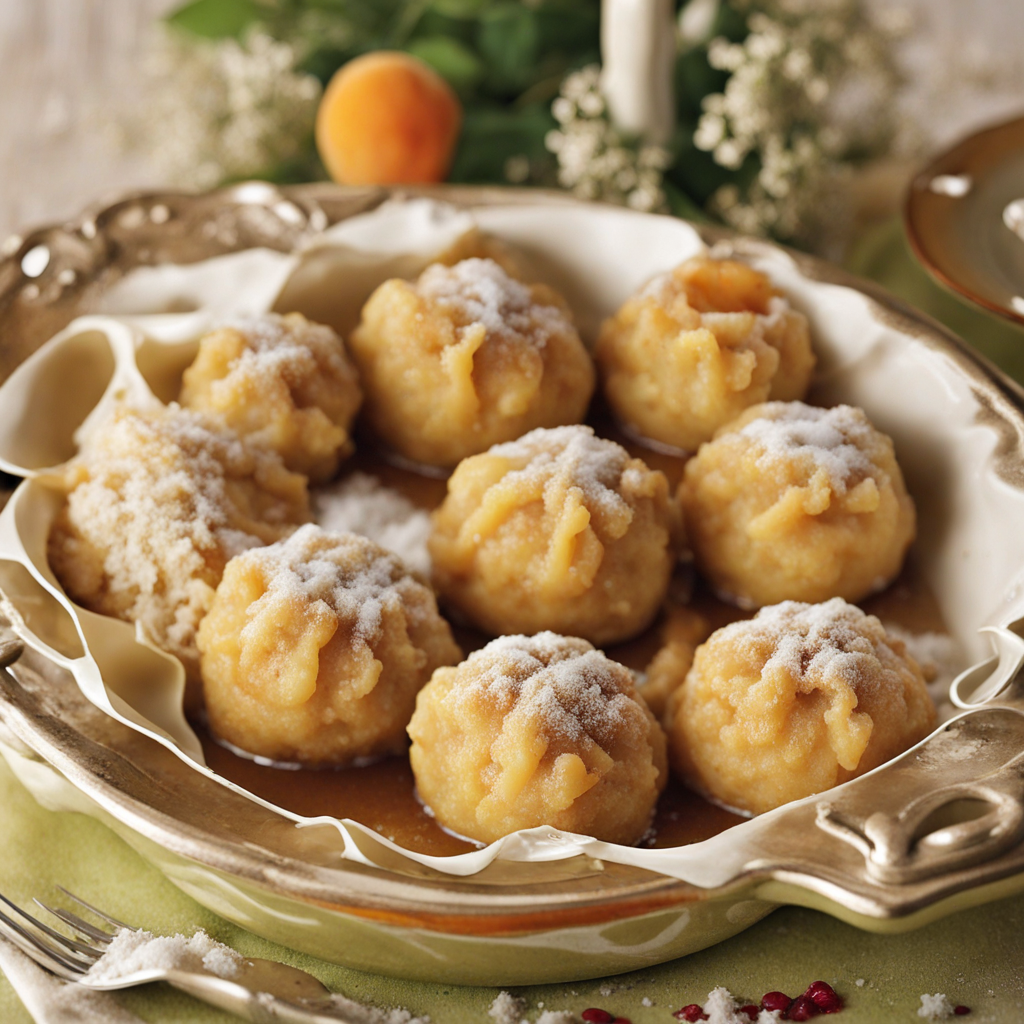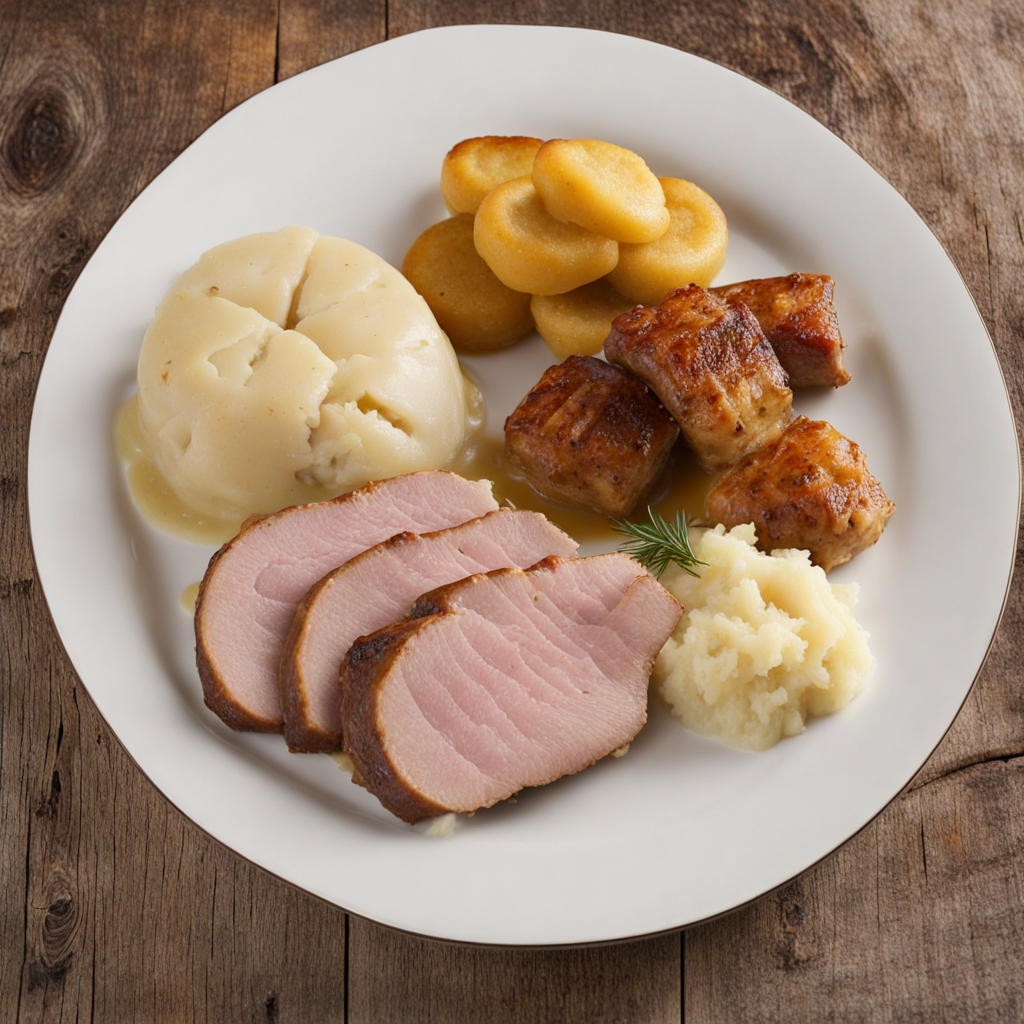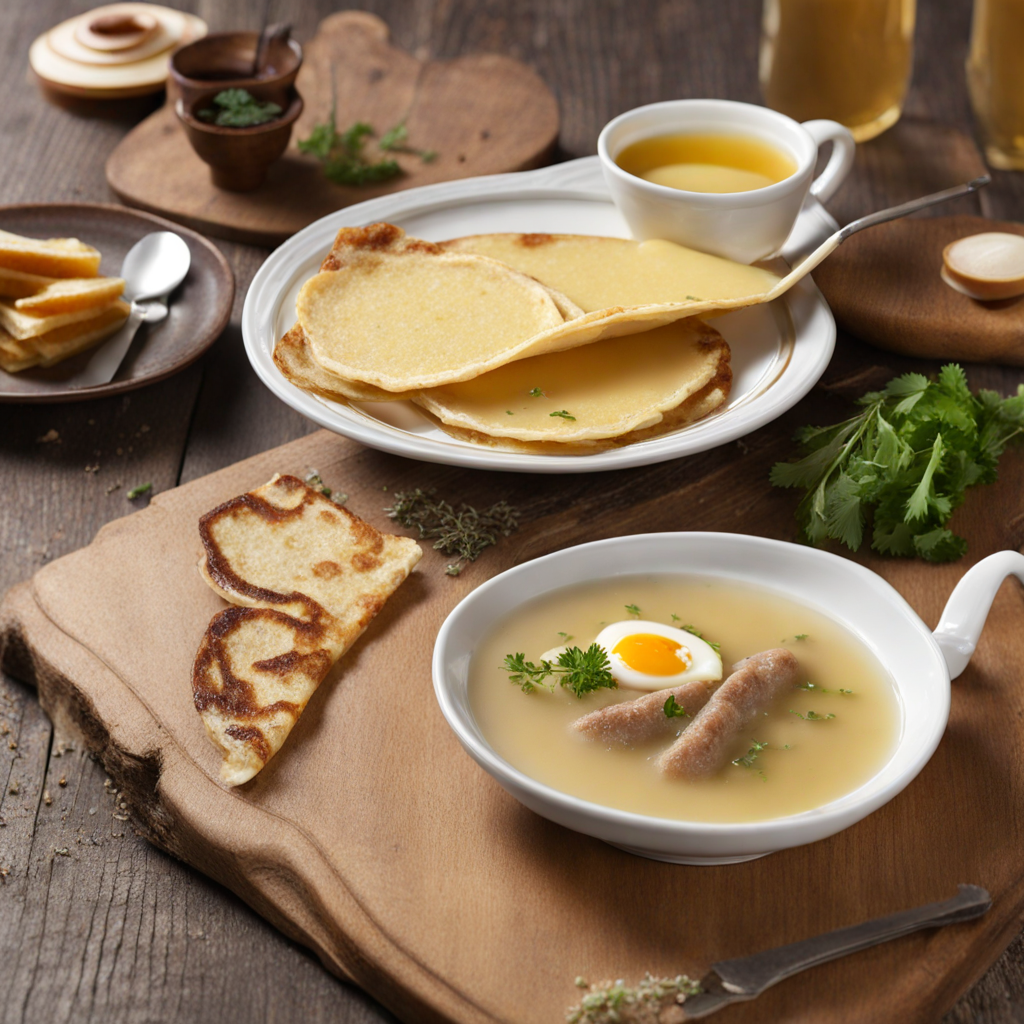Marillenknödel
Marillenknödel is a delightful Austrian dessert that showcases the country’s rich culinary traditions, particularly its love for fruit. These dumplings are typically made with a sweet dough, often crafted from a mixture of flour, potatoes, and eggs, which gives them a light and fluffy texture. The star of the dish is the apricot, or ‘Marille’ in German, which is nestled inside the dough. When cooked, the dumplings take on a slightly golden hue, inviting you to explore the sweet and tangy fruit hidden within. Once you take a bite, the warm, juicy apricot bursts with flavor, creating a harmonious contrast with the soft, pillowy dough. The natural sweetness of the apricot is complemented by a dusting of sugar and sometimes a sprinkle of cinnamon, enhancing the overall taste experience. Some variations include a filling of sweetened quark or breadcrumbs, adding an extra layer of richness and texture to the dish. Marillenknödel is often served with a side of melted butter and a generous sprinkling of breadcrumbs that have been toasted to a golden brown. This adds a nutty crunch that beautifully balances the softness of the dumpling. The dish is a wonderful representation of Austrian comfort food, evoking feelings of warmth and nostalgia, making it a must-try for anyone eager to explore the diverse flavors of Austria.
How It Became This Dish
Marillenknödel: A Sweet Journey Through Austria's Culinary Heritage In the heart of Central Europe lies Austria, a nation celebrated for its rich history, stunning landscapes, and vibrant culture. Among its many culinary delights, one dish stands out as a symbol of Austrian tradition: Marillenknödel. These sweet apricot dumplings encapsulate the essence of Austrian gastronomy, showcasing local ingredients and a deep-rooted connection to the land. To truly appreciate Marillenknödel, one must delve into its origins, cultural significance, and the evolution of this beloved dish over time. Origins of Marillenknödel The history of Marillenknödel can be traced back to the late 19th century, although its roots may be even older, intertwined with the broader tradition of dumpling-making across Central Europe. The word “Knödel” itself is derived from the German term for dumpling, which has its own etymological roots in the Slavic languages. In Austria, dumplings have long been a staple, with savory varieties made from potatoes or bread, serving as hearty accompaniments to meats and stews. The use of apricots, or "Marillen" in German, adds a unique twist to this traditional dumpling dish. Apricots have been cultivated in Austria since at least the 16th century, when they were first introduced from the Mediterranean region. The Wachau Valley, a UNESCO World Heritage site located along the Danube River, is particularly famous for its apricot orchards. The region’s warm climate and fertile soil create the perfect conditions for growing these juicy, sweet fruits, which have become an integral part of local cuisine and culture. Cultural Significance Marillenknödel are not merely a dessert; they embody the spirit of Austrian family life and tradition. Often served during the summer months when apricots are in season, these dumplings are a cherished part of festive occasions, family gatherings, and Sunday dinners. The act of making Marillenknödel is often a communal affair, with families coming together to prepare the dish, each member contributing to the process. This communal aspect emphasizes the importance of food as a means of fostering relationships and preserving family traditions. In Austrian culture, food is deeply intertwined with the seasons. Marillenknödel’s emergence during the summer months highlights the significance of seasonal eating, a concept that has gained renewed attention in today’s culinary landscape. The act of using fresh, local apricots not only celebrates the bounty of the land but also reinforces the connection between the people and their environment. Moreover, Marillenknödel are often associated with nostalgia, evoking memories of childhood and simpler times. Many Austrians will fondly recall their mothers or grandmothers preparing these dumplings, instilling a sense of comfort and warmth. The dish thus serves as a bridge between generations, allowing the past to be honored while adapting to modern tastes. The Evolution of Marillenknödel Over the years, Marillenknödel have undergone various transformations, reflecting changes in culinary trends and societal norms. Traditionally, the dumplings are made with a soft, sweet dough, typically using a mixture of flour, eggs, and quark (a type of fresh cheese). The dough is rolled out and filled with halved apricots, often sprinkled with sugar and sometimes a pinch of cinnamon. Once formed, the dumplings are boiled until they float to the surface, signaling that they are ready to be served. In the early 20th century, as tourism began to flourish in Austria, particularly in regions like the Wachau Valley, Marillenknödel gained popularity beyond local borders. Restaurants and cafés started to feature the dish prominently on their menus, catering to the growing number of visitors seeking to experience authentic Austrian cuisine. The dumplings became a symbol of regional identity, representing not only the flavors of Austria but also its picturesque landscapes and cultural heritage. In the post-World War II era, the rise of convenience foods and changing lifestyles began to influence traditional cooking practices. While some families continued to make Marillenknödel from scratch, others turned to pre-made versions available in supermarkets. This shift sparked a debate within the culinary community about authenticity versus convenience, with many food purists advocating for the preservation of traditional methods. The late 20th and early 21st centuries saw a resurgence of interest in artisanal and homemade foods, coinciding with the slow food movement and a growing emphasis on sustainability. Chefs and home cooks alike began to embrace the art of making Marillenknödel from scratch, using organic apricots and locally sourced ingredients. This revival highlighted the importance of craftsmanship and the connection to the land, breathing new life into a dish that had once been overshadowed by modern conveniences. Contemporary Variations Today, Marillenknödel can be found in a variety of forms, reflecting both regional variations and personal interpretations. While the classic version remains beloved, creative chefs have experimented with alternative fillings, such as plums or cherries, and have introduced different flavor profiles by incorporating ingredients like chocolate or nuts. Some modern takes even feature gluten-free or vegan options, allowing for broader accessibility while still honoring the spirit of the original dish. Festivals celebrating apricot harvests, particularly in the Wachau Valley, further solidify Marillenknödel's cultural significance. These events often showcase the dish in various forms, with local chefs competing to create the most innovative versions while still adhering to traditional methods. Such festivals not only provide a platform for culinary creativity but also reinforce the communal aspect of food, bringing people together to celebrate their shared heritage. Conclusion Marillenknödel is more than just a sweet dumpling; it is a reflection of Austria's rich culinary heritage and a testament to the enduring power of tradition. From its humble origins in the fertile orchards of the Wachau Valley to its place on the tables of families and restaurants alike, Marillenknödel encapsulates the spirit of Austrian culture, where food serves as a vessel for memory, identity, and community. As we continue to navigate the complexities of modern life, the stories and flavors encapsulated in Marillenknödel remind us of the importance of connection—both to our past and to one another. Whether enjoyed in a cozy family kitchen or at a bustling festival, these apricot dumplings will forever hold a cherished place in the hearts and palates of those who call Austria home.
You may like
Discover local flavors from Austria







